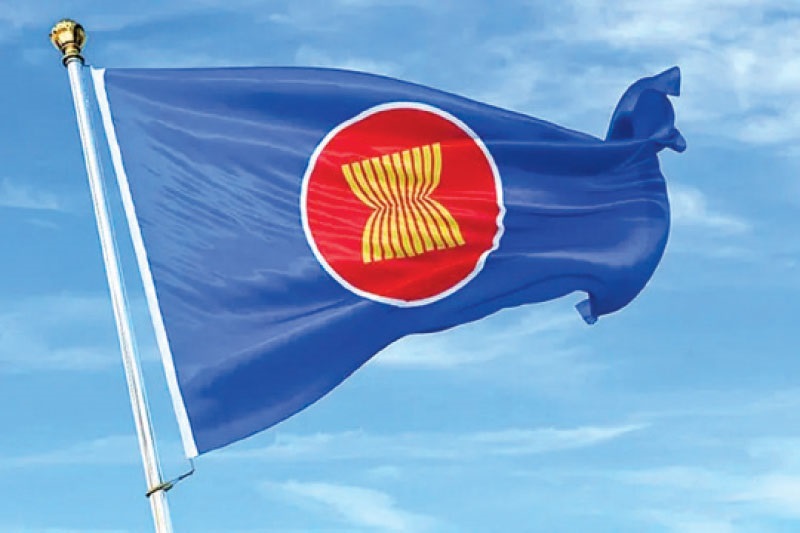ASEAN’s Stuttering Search for a Solution to Myanmar’s Turmoil
The back-to-back summits of two key regional groupings, the Association of Southeast Asian Nations (ASEAN) and the East Asian countries, held in Vientiane last week have failed to raise any hope for resolving the seemingly intractable problem in Myanmar, a country where the raging war between its military junta and rebel groups continues, leaving democracy in limbo.

Barring the ASEAN’s decision to start afresh “informal consultations” among the ten ASEAN member countries on the issue, nothing concrete has emerged from the two summits. The junta has so far refused to hold talks with its opponents. Thailand has offered to host an "informal consultation" of the ten members of ASEAN in December to try and find a way out of the conflict in Myanmar, which has dislocated millions of people, including Rohingyas. However, there is no unanimity among the ASEAN member countries about the way forward. Thailand Prime Minister Paetongtarn Shinawatra said in a meeting of ASEAN leaders that the grouping “should send a unified message to all parties in Myanmar that there is no military solution. It is time to start talking."
The ASEAN-led peace initiative for Myanmar has made little progress since it was unveiled in April 2021 just months after the country's military staged a coup and unseated an elected government. On the other hand, violence has escalated in the last three years with the emergence of an armed resistance movement led by a loosely-crafted alliance of several ethnic minority rebel groups along the borders with India and China, taking on the military on multiple fronts.
Under ASEAN chair Laos, the bloc's approach has expanded the peace process to include Myanmar's other neighbours like India and China and Thailand's calling for stepped-up engagement ahead of a planned election by the country's embattled military rulers. While there is consensus in ASEAN about the need for talks with the junta, there is no clarity if the grouping as a whole has a clear-cut plan on Myanmar.
Within ASEAN, member-countries are divided between those who want the junta to do more and those calling for more talks among warring parties in Myanmar. Addressing the East Asian Summit, Indian Prime Minister Narendra Modi suggested talks with the junta and disfavoured the idea of the international community turning away from the military rulers.
The Myanmar junta is conducting a nationwide census for a possible move to hold an election next year, even though its writ does not run in vast regions of the country. The ASEAN has so far said little on the proposed election which has already been widely dubbed as a sham. But Paetongtarn hinted at Thailand's support for holding the vote on the grounds that it will open up more political space and dialogue between parties.
Thailand’s foreign ministry has recently stated that a political solution to Myanmar is necessary and that Thailand may in fact float its own plan to resolve the crisis at the upcoming summit. But there has so far been nothing in public about the proposed plan which has in fact raised a question mark over the efficacy of ASEAN's five-point consensus. Does it also mean that the consensus has reached a dead end?
India maintains that the five-point consensus is an overarching consensus among ASEAN countries and their partners about the situation in Myanmar and any solution or any attempts at finding a solution comes under that consensus. The United States and most West European countries want to keep up the heat on Myanmar through sanctions while ASEAN is divided over the effectiveness of this approach. India and China oppose sanctions saying the punitive measures will end up affecting the lives of ordinary people much more than affecting the military leadership in Myanmar. The junta is aware of the divides in the international community and taking its advantage. The military rulers may use the bait of an election to deflect the attention from the civil war in Myanmar and the Rohingya refugee crisis.
The much bigger geo-economic stake in Myanmar’s stability is its geographical location. It stands at the junction of connectivity between ASEAN and South Asia. There is the Master Plan on ASEAN Connectivity 2025, (its successor document) the ASEAN Connectivity Strategic Plan, and India’s connectivity initiatives in the region under India’s Act East Policy and Security and Growth for All in the Region (SAGAR). These initiatives aim to establish seamless connectivity in the Indo-Pacific region by collaborating for quality and resilient infrastructure, enhancing cooperation in transport in land, air, and maritime domains and ensuring the early completion of India-Myanmar-Thailand Trilateral Highway and its further eastward extension to Lao, Cambodia and Vietnam.
______________________________________
The writer is a veteran Indian journalist